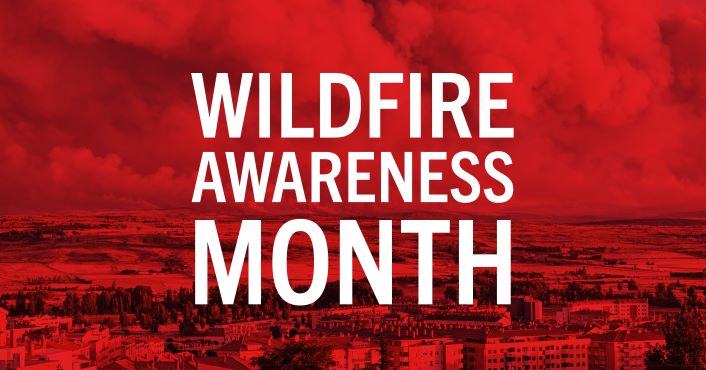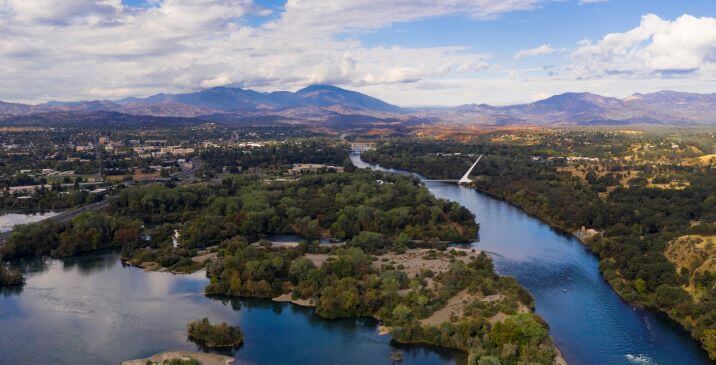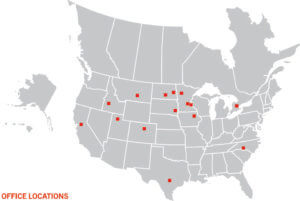Staying Safe this Wildfire Season

May 5, 2022
Boosting Eesiliency, Mitigating Risk
While National Wildfire Awareness Month (May 2022) is dedicated to building awareness about wildfires among the broader American public, it’s also an opportune time for electric utilities of all sizes to reflect on the impacts that wildfires have on their system and develop strategies to play a role in preventing them.
On May 3, 2022, when this story was being drafted, there were 199 wildfires in California affecting 4,373 acres. However, it’s early. If 2022 is anything like 2021, more than 2 million acres could be burned by the end of the year. According to Statista, in 2021, over 9,000 individual wildfires burned in the California area ravishing nearly 2.23 million acres.
But what many overlook is the danger of wildfire across our country.
Because on May 3, 2022, there were also:
74 wildfires in Texas (394,399 acres)
51 wildfires in New Mexico (432,795 acres)
14 wildfires in Mississippi (12,193 acres)
2 wildfires in Kentucky (625 acres)
…as well as wildfires in Alaska, Arizona, Colorado, Georgia, Kansas, Missouri, Montana, Nebraska, Nevada, Oklahoma, South Dakota, Utah, Washington and Wyoming.
Wildfires not only burn up forest areas and prairies, they also can destroy entire communities, as witnessed in California, or the Marshall wildfire that hit on Dec. 30, 2021, that burned down more than 1,000 structures and killed two people in Boulder, Colorado.
Wildfires also can afflict damage on utility assets, too – power lines, substations, and more, leading to power outages and increased operating expenses (OPEX).
While many wildfires are ignited naturally, such as by a lightning strike, wildfires also begin through the carelessness of humans. It’s why we built campaigns to prevent fires, including memorable characters like Smokey the Bear.
Wildfires also can start because of aging equipment. This has become a greater concern among utility leaders in both the U.S. and Canada as the intensity of wildfires grows from one year to the next.
At Ulteig, our Power team has been working with utilities large and small to consider the future of wildfires and what actions utilities may want to consider now to mitigate their risks in the years to come. At the heart of these conversations, utilities, anticipating a future where there are more wildfires burning more intensely, see an opportunity to make grid hardening (fire hardening) a priority and to design for increased grid resiliency against wildfires.
Various utilities are already taking action in the form of:
- Strategic undergrounding of overhead lines
- Replacing aging assets
- Adding protection and control networks to shut off or redirect power in fault events
- Building prioritization matrices for asset repairs
- Proactively spending in capital expenditures (CAPEX) for more resilient structure materials to decrease OPEX related to wildfire outages/repairs
- Assessing and maintaining wildfire defensible spaces
Ulteig helps utilities plan ahead by providing:
- Fire hardening program management, including supporting planning meetings, evaluating defective structures, organizing site visits, and working with construction contractors in developing constructible designs;
- Design and engineering services to replace and/or upgrade defective structures, such as replacing wood structures with steel or other hardened materials like fiberglass;
- Fire hardening and wildfire risk reduction planning to incorporate into CAPEX plans to reduce future OPEX due to the consequences of wildfire;
- Substation communications network design and integration to enhance communications between substations to shut down in the event of imminent wildfire danger.
Considering that wildfires are striking throughout the United States and Canada, utilities that prioritize replacing and upgrading aging assets today will build a buffer of resistance that will help them adapt to not only more wildfires, but also, potentially, new federal and state laws and regulations likely to be put in place in the coming years as the general public’s fears about wildfire grow.
Not If, But When
It’s not a matter of if, but when. When it comes to wildfires, it’s a reality we will continue to face. Wildfire Today (Feb. 23, 2022), “climate change and land-use change are projected to make wildfires more frequent and intense, with a global increase of extreme fires of up to 14 percent by 2030, 30 percent by the end of 2050, and 50 percent by the end of the century, according to a new report by the United Nations Environment Program (UNEP) and GRID-Arendal.”
The time to prepare is now.
Learn more about how Ulteig can help your utility reduce the impact of wildfires
The first step to addressing wildfire risk begins with conducting a study of a utility’s assets and analyzing potential wildfire risk hot points. Ulteig’s team of highly qualified Grid Modernization experts provide insightful data and analysis to help guide our clients in decision-making, and advise of potential pitfalls and future project considerations for added long-term value. Learn more now.
WHAT MAKES ULTEIG DIFFERENT?
From global energy producers to locally funded cities and private developers to government agencies, the clients we serve encompass a broad range of relationships and projects. Find out why Ulteig is a leader in the engineering industry.
Contact Us


